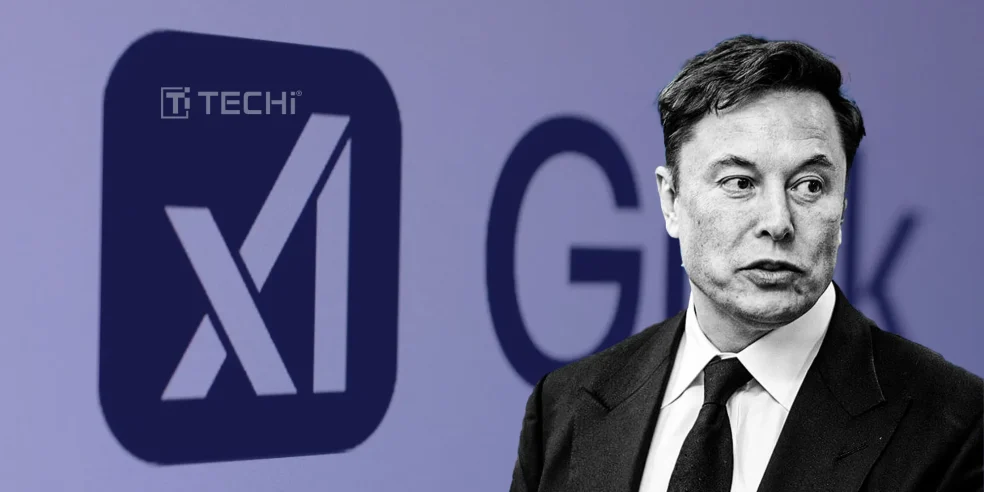Tools & Platforms
YouTube to gauge US users’ ages with AI after UK and Australia add age checks | Technology

YouTube announced on Tuesday that it will begin to use artificial intelligence to estimate the ages of users in the US, in order to show them age-appropriate content.
The rollout of the new feature comes one day after Australia’s government announced it would ban children under 16 from using YouTube and less than a week after the UK implemented sweeping age checks on content on social networks.
YouTube’s AI age verification on its home turf indicates it is putting into place a form of compliance with the Australian and UK requirements, despite its persistent opposition to age-check requirements.
“Over the next few weeks, we’ll begin to roll out machine learning to a small set of users in the US to estimate their age, so that teens are treated as teens and adults as adults,” wrote James Beser, director of product management for YouTube Youth, in a blog post titled Extending our built-in protections to more teens on YouTube.
YouTube was promised an exemption from Australia’s social media ban last year by the then communications minister, but the Australian government said on Monday that the platform would, in fact, be included in the country’s ban on children under 16 using social networks. The ban is slated to take effect in December. Google, YouTube’s parent company, strenuously advocated against the Australian ban and has threatened to sue to overturn it.
On 25 July, the UK’s long-awaited Online Safety Act took effect. The law requires social media and other internet platforms to implement safety measures protecting children – preventing them from accessing pornography or content that promotes dangerous behavior – or face large fines.
after newsletter promotion
By testing the new AI tool in the US – the platform’s second largest market after India – YouTube is following the example of other tech companies, which have in some cases followed tightened privacy regulations in the past by implementing stricter mandates for all their users. In the US, California often functions as a de facto tech regulator, both by virtue of playing host to many of Silicon Valley’s biggest players and by passing stricter regulations than other states. Like Australia and the UK, some states in the US have passed age verification laws targeting social media sites, though these have not been interpreted as applying to YouTube.
When YouTube determines a user is teen or pre-teen, the site will disable personalized advertising, activate digital wellbeing features and put stricter content filters as well as behavioral restrictions into place.
YouTube’s AI will assess a user’s age via multiple behavioral factors, including what kind of videos the user searches for, the categories of videos they watch, and how long the account has been active, per its blog post.
“This technology will allow us to infer a user’s age and then use that signal, regardless of the birthday in the account, to deliver our age-appropriate product experiences and protections,” Beser wrote, adding that the company has used the technology in other markets prior to introducing it in the US.
If the AI’s estimation is incorrect, YouTube says it will allow a user to verify their age with a credit card, a government ID or a selfie.
How the Australian government will ensure that under-16s stay away from the world’s largest video site, one of the internet’s primary destinations for both children and adults, remains an open question. In June, a test of the technology meant to estimate Australian users’ ages was “not guaranteed to be effective”.
Tools & Platforms
AI-Enabled Heart Diagnostics Put HeartFlow (HTFL) in the Spotlight

HeartFlow, Inc. (NASDAQ:HTFL) is one of the AI Stocks to Watch Out For in 2025. On September 2, JPMorgan analyst Robbie Marcus initiates coverage on the stock with an Overweight rating and a price target of $36.00.
The firm believes that Heartflow is “one of the clearest and most pioneering downstream beneficiaries of the AI revolution in the healthcare sector.”
The company is using artificial intelligence in healthcare to help diagnose heart disease. Through their technology, doctors can gain better insights of a patient’s heart while reducing costs and improving workflow.
Jirsak/Shutterstock.com
JP Morgan believes that even though investors are rightly focused on the hardware, data, and infrastructure that’s driving modern artificial intelligence, HTFL stands out as a clear and pioneering downstream beneficiary of the AI revolution in healthcare.
“The company operates at the unique intersection of regulated healthcare and technology through its novel, AI-enabled, diagnostic software for coronary artery disease (CAD). The novel platform uses AI and advanced computational fluid dynamics to create a personalized 3D model of a patient’s heart based off of a single coronary computed tomography angiography (CCTA). Heartflow is one of the first MedTech companies to offer a clinically meaningful and reimbursed product that leverages modern day computing power and machine learning/AI to address a clinical unmet need in coronary artery disease (CAD), while simultaneously offering the potential to streamline procedural workflow and lower overall cost of care. As one of the few pure-play software MedTech businesses, Heartflow benefits from a capital-light business model, an excellent gross margin profile, clinical/regulatory moat with healthy reimbursement, and a highly differentiated diagnostic solution in a large, untapped market.”
HeartFlow, Inc. (NASDAQ:HTFL) is a medical technology company.
While we acknowledge the potential of HTFL as an investment, we believe certain AI stocks offer greater upside potential and carry less downside risk. If you’re looking for an extremely undervalued AI stock that also stands to benefit significantly from Trump-era tariffs and the onshoring trend, see our free report on the best short-term AI stock.
READ NEXT: 10 Must-Watch AI Stocks on Wall Street and 10 AI Stocks Investors Are Watching Closely.
Disclosure: None.
Tools & Platforms
Where's the Fun in AI Gambling? – WIRED
Tools & Platforms
Tesla Shareholders to Vote on Potential Investment in Musk’s AI Startup xAI

Tesla shareholders will soon decide whether the company should invest in Elon Musk’s artificial intelligence company, xAI. According to Tesla’s annual proxy statement, a shareholder proposal will put the question to a vote at the November 6 meeting . Bloomberg reports that xAI merged with Musk’s social media company, X, earlier this year, and that SpaceX committed $2 billion as part of a $5 billion equity fundraising round. This funding underscores the existing financial ties among Musk’s enterprises.
This vote occurs amid mounting pressure on Tesla as vehicle sales weaken and its Robotaxi rollout progresses slowly. The board has taken a neutral stance on the proposal, foregoing its usual recommendation to support or oppose shareholder-led items. The outcome may influence whether Tesla deepens its involvement in AI and robotics through alignment with xAI’s technology and strategy.
Tesla shareholders will cast votes at the November 6 annual meeting on whether to authorize the company to invest in Elon Musk’s artificial intelligence startup, xAI. The investment proposal originates from a shareholder submission, which the company will include in its proxy materials after receiving multiple proper requests. (Tesla will include one properly submitted proposal on each topic in its proxy statement). Tesla’s board has taken a neutral stance, declining to recommend either for or against the proposal.
Broader Context:
Questions about Elon Musk’s expanding influence over Tesla have drawn renewed scrutiny amid the xAI investment proposal. Corporate governance experts cite potential conflicts of interest arising from Musk’s dual role as Tesla CEO and xAI founder. Some investors have expressed concerns that resources and talent may be diverted from Tesla to xAI, risking dilution of focus at the automaker.
Shareholder pressure has intensified amid Tesla’s recent performance challenges. The company faces a notable drop in vehicle deliveries and delays in its robotaxi programme, highlighting the urgency of strategic clarity. At the same time, Musk’s proposed compensation package, potentially worth up to US $1 trillion, would significantly increase his influence over Tesla’s direction. Critics argue the scale raises serious governance risks.
In this light, the vote on investing in xAI becomes a measure of how shareholders view Musk’s multifaceted role and the balance between strategic ambition and fiduciary responsibility.
What to Watch Ahead of the Vote
Investors will observe whether the proposal gains sufficient support when Tesla shareholders cast their votes on November 6. Close attention will fall on shareholder sentiment regarding potential conflicts of interest, given Elon Musk’s leadership roles at both Tesla and xAI. Analysts will also monitor media and investor reactions leading up to the vote to assess whether the proposal is seen as a strategic opportunity or a governance risk. The result may signal how shareholders balance innovation aspirations with oversight concerns.
Final Take
The upcoming vote on investing in xAI serves as a critical crossroads for Tesla’s identity and governance. On one hand, closer alignment with xAI may support Tesla’s push into AI and robotics. On the other hand, the move raises concerns about shareholder oversight. Elon Musk’s influence across multiple companies, including his history of reallocating resources, such as GPUs, from Tesla to xAI, illustrates the blurred boundaries within his business network
Meanwhile, Tesla’s board has proposed a compensation package that could award Musk up to US $1 trillion in stock if ambitious targets are met, increasing his control notably. Together these developments suggest a moment of reckoning. Shareholders must balance the potential gains from AI and robotics against legitimate governance concerns at one of the world’s most closely held public companies.
-

 Business1 week ago
Business1 week agoThe Guardian view on Trump and the Fed: independence is no substitute for accountability | Editorial
-
Tools & Platforms4 weeks ago
Building Trust in Military AI Starts with Opening the Black Box – War on the Rocks
-

 Ethics & Policy1 month ago
Ethics & Policy1 month agoSDAIA Supports Saudi Arabia’s Leadership in Shaping Global AI Ethics, Policy, and Research – وكالة الأنباء السعودية
-

 Events & Conferences4 months ago
Events & Conferences4 months agoJourney to 1000 models: Scaling Instagram’s recommendation system
-

 Jobs & Careers2 months ago
Jobs & Careers2 months agoMumbai-based Perplexity Alternative Has 60k+ Users Without Funding
-

 Education2 months ago
Education2 months agoVEX Robotics launches AI-powered classroom robotics system
-

 Podcasts & Talks2 months ago
Podcasts & Talks2 months agoHappy 4th of July! 🎆 Made with Veo 3 in Gemini
-

 Funding & Business2 months ago
Funding & Business2 months agoKayak and Expedia race to build AI travel agents that turn social posts into itineraries
-

 Education2 months ago
Education2 months agoMacron says UK and France have duty to tackle illegal migration ‘with humanity, solidarity and firmness’ – UK politics live | Politics
-

 Podcasts & Talks2 months ago
Podcasts & Talks2 months agoOpenAI 🤝 @teamganassi


